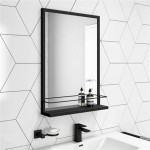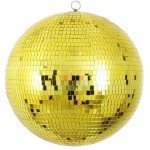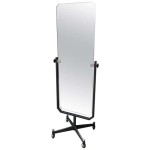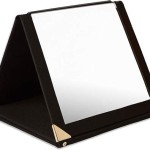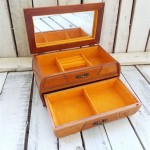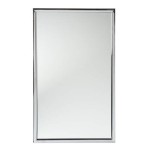Hang Heavy Mirror Drywall: A Comprehensive Guide
Hanging a heavy mirror on drywall can be a daunting task. Done incorrectly, it can result in damage to the wall, the mirror, or even injury. This guide provides a comprehensive overview of the necessary steps and considerations for safely and securely mounting a heavy mirror on drywall.
1. Assessing the Mirror and Wall
Before beginning, accurately determine the weight and dimensions of the mirror. This information is crucial for selecting the appropriate hanging hardware. Inspect the drywall for any existing damage or weaknesses. Identify the wall's construction, whether it's standard drywall, plaster, or another material. Knowing the wall type helps determine the best anchoring method.
2. Choosing the Right Hanging Hardware
Selecting the correct hardware is paramount for secure hanging. For heavier mirrors, avoid using small picture hooks or wire hangers. These are inadequate for supporting significant weight and can lead to the mirror falling. Instead, consider robust options like heavy-duty D-rings, J-hooks, or French cleats. These are designed to distribute weight evenly and provide greater stability.
For particularly heavy mirrors, especially those exceeding 50 pounds, using toggle bolts or molly bolts is strongly recommended. Toggle bolts are ideal for hollow walls, expanding behind the drywall to create a secure anchor. Molly bolts, on the other hand, compress against the back of the drywall, distributing the weight across a larger area. Both options provide significantly greater holding power than standard screws.
3. Locating Wall Studs
Whenever possible, hang heavy mirrors directly onto wall studs. Studs provide the most secure anchoring point in drywall construction. Use a stud finder to accurately locate the studs behind the wall surface. Mark the stud locations with a pencil for easy reference during installation. If the desired mirror placement does not align with studs, utilizing the appropriate wall anchors, as mentioned above, becomes essential.
4. Marking and Preparing the Wall
Once the studs are located (or anchor locations determined), carefully measure and mark the desired mirror placement on the wall. Use a level to ensure the markings are perfectly horizontal. This prevents the mirror from hanging crooked. If using D-rings or J-hooks, measure the distance between the hanging hardware on the back of the mirror and transfer these measurements to the wall markings. This ensures proper alignment and secure hanging.
If using French cleats, careful preparation is essential. The cleat system consists of two interlocking pieces, one attached to the wall and the other to the back of the mirror. Precise alignment of these two pieces is crucial for the mirror to hang correctly. Ensure the wall cleat is securely mounted before attempting to hang the mirror.
5. Installing the Hanging Hardware
When installing the hanging hardware on the wall, ensure the screws or bolts are driven into the studs or securely anchored using appropriate wall anchors. Use the correct size screws or bolts for the chosen hardware and wall type. For toggle or molly bolts, follow the manufacturer's instructions carefully for proper installation. Over-tightening can damage the drywall, while under-tightening can compromise the security of the hanging.
Attach the corresponding hardware to the back of the mirror. Ensure that the hardware is securely fastened and can support the weight of the mirror. If using D-rings, ensure they are positioned appropriately to hang on the installed hooks or screws. For French cleats, ensure the mirror-side cleat aligns perfectly with the wall-mounted cleat.
6. Hanging the Mirror
With the wall and mirror hardware installed, carefully lift the mirror and engage it with the wall-mounted hardware. For D-rings or J-hooks, this involves hanging the D-rings onto the screws or hooks. For French cleats, carefully slide the mirror-mounted cleat onto the wall-mounted cleat until it sits flush against the wall. Once the mirror is hanging, check its stability by gently applying pressure to different areas. Ensure the mirror is securely mounted and does not wobble or shift.
7. Safety Precautions
Throughout the entire process, prioritize safety. Wear appropriate safety glasses to protect your eyes from dust and debris. If working with particularly heavy mirrors, enlist assistance to avoid strain or injury. Use a sturdy stepladder or scaffolding for reaching high areas. Ensure the surrounding area is clear of obstacles to prevent accidents. Dispose of any sharp objects or debris safely after completion.

How To Hang A Heavy Mirror On Drywall Stas Picture Hanging Systems
How To Hang A 100 Pound Mirror On Drywall Quora

A Better Way To Hang Heavy Mirror Hanging Brackets

How To Hang A Heavy Mirror The Home Depot
:strip_icc()/ScreenShot2022-04-28at1.12.19PM-e055476c70c6438585fa7c5cd531edcf.png?strip=all)
4 Easy Ways To Hang A Heavy Mirror

How To Hang A Heavy Mirror With French Cleat

How To Hang A Very Heavy Picture Or Mirror The Best

How To Hang Heavy Mirrors Frames Without Nails 3m

How To Hang A Heavy Mirror Diy Family Handyman

How To Hang A Heavy Mirror The Home Depot

